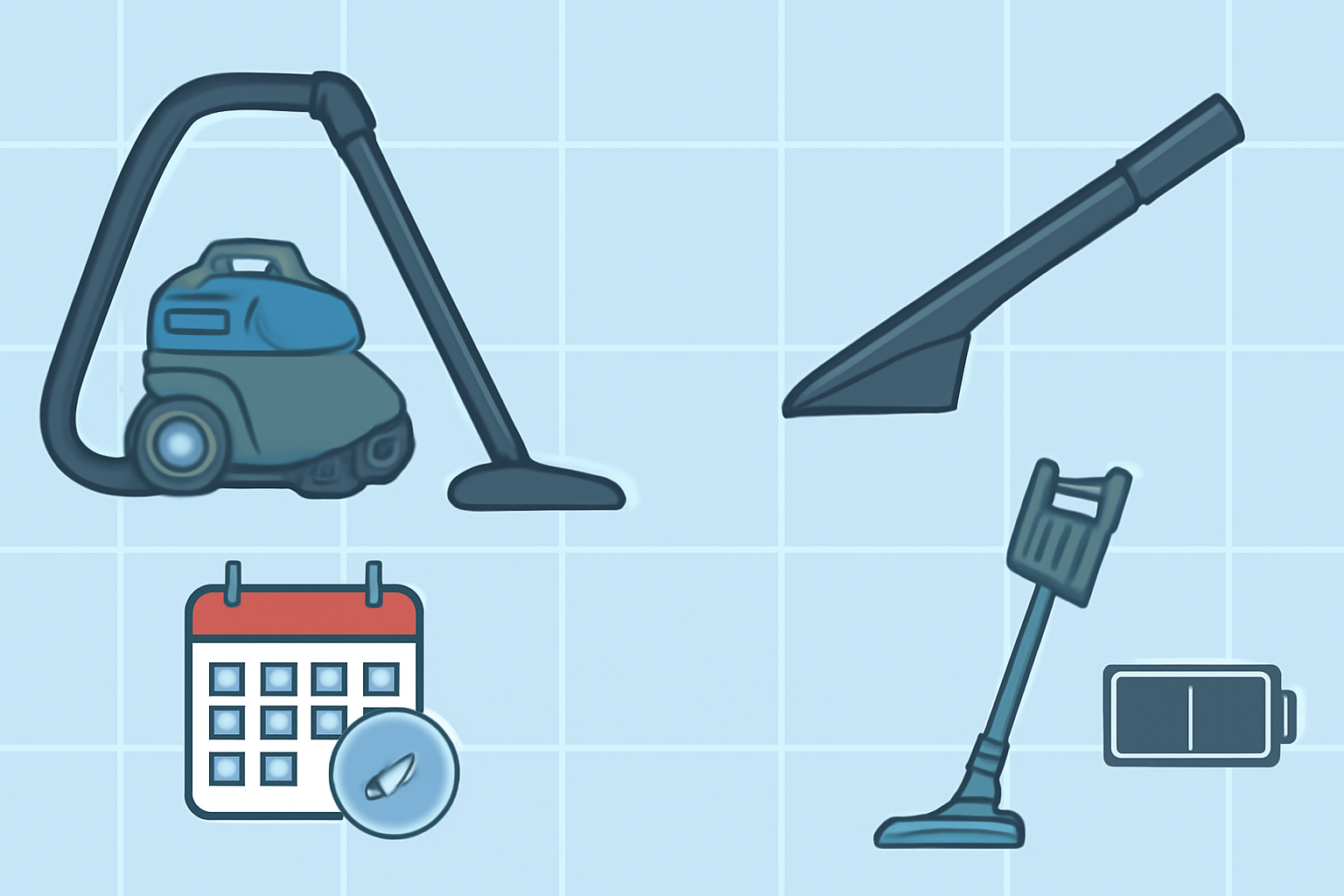Cleaning tile grout and floor gaps is often a challenging task, especially when dirt and debris get stuck in those hard-to-reach places. However, with the right tools and techniques, you can keep these areas spotless and hygienic. Here's how to do it efficiently using a vacuum cleaner and other methods.
Use a Wet-Dry Vacuum Cleaner
A wet-dry vacuum cleaner is an excellent choice for cleaning both wet and dry messes, including tile grout and floor gaps. These vacuums are equipped with powerful suction power and specialized attachments that can reach deep into crevices. The combination of high suction power and filtration ensures that even the tiniest particles are removed, leaving your floors clean and safe. Learn more about wet-dry vacuum cleaner solutions in this guide on suction power and filtration.Specialized Attachments for Narrow Gaps
To tackle the challenge of cleaning grout lines, use attachments designed specifically for tight spaces. Many modern vacuums come with narrow crevice tools, which are perfect for fitting into those hard-to-reach corners. These attachments allow for a more precise clean without damaging the surface of the tiles or floors. Check out more about the best attachments for your vacuum on attachments for tight spaces.Regular Cleaning Routine
Regular use of a vacuum cleaner helps prevent the accumulation of dirt and grime in tile grout and floor gaps. Depending on your household's needs, you can vacuum once a week or more often if your floors experience higher foot traffic. It's essential to choose a vacuum that offers both portability and runtime to ensure long-lasting cleaning power, whether you're using a cordless or corded model. Read further about these features in this post on runtime and portability.Consider Corded vs. Cordless Vacuums
When choosing a vacuum cleaner for cleaning grout and floor gaps, you might wonder whether a corded or cordless model is better. A corded vacuum typically offers more consistent suction power for longer durations, making it ideal for deep cleaning. On the other hand, a cordless vacuum offers greater portability, allowing you to move around without being hindered by cords. For heavy-duty cleaning, a corded vacuum might be more suitable, especially for large floors.After-Cleaning Care
Once you've used your vacuum cleaner to clean the grout and gaps, consider finishing up with a wet mop or microfiber cloth to remove any remaining dirt or cleaning solution. This will ensure your tiles and floors look pristine.
For more expert advice on maintaining your vacuum cleaner, check out this article on the best wet-dry vacuum cleaner models available in the market. Also, explore tips on how suction power and filtration can enhance your cleaning experience.
For more information about our products, visit www.lxvacuum.com.


















